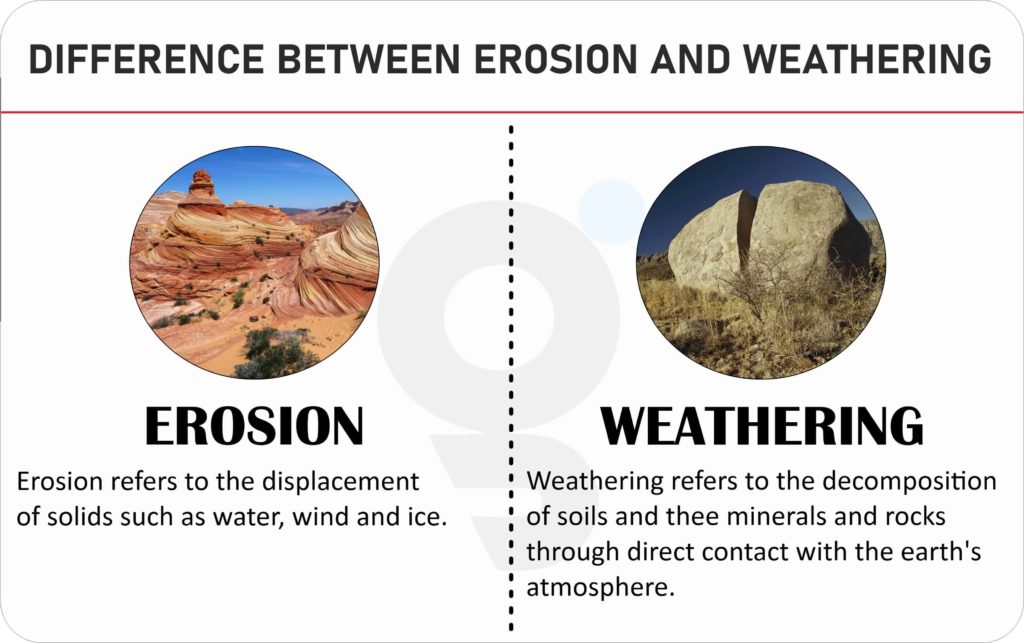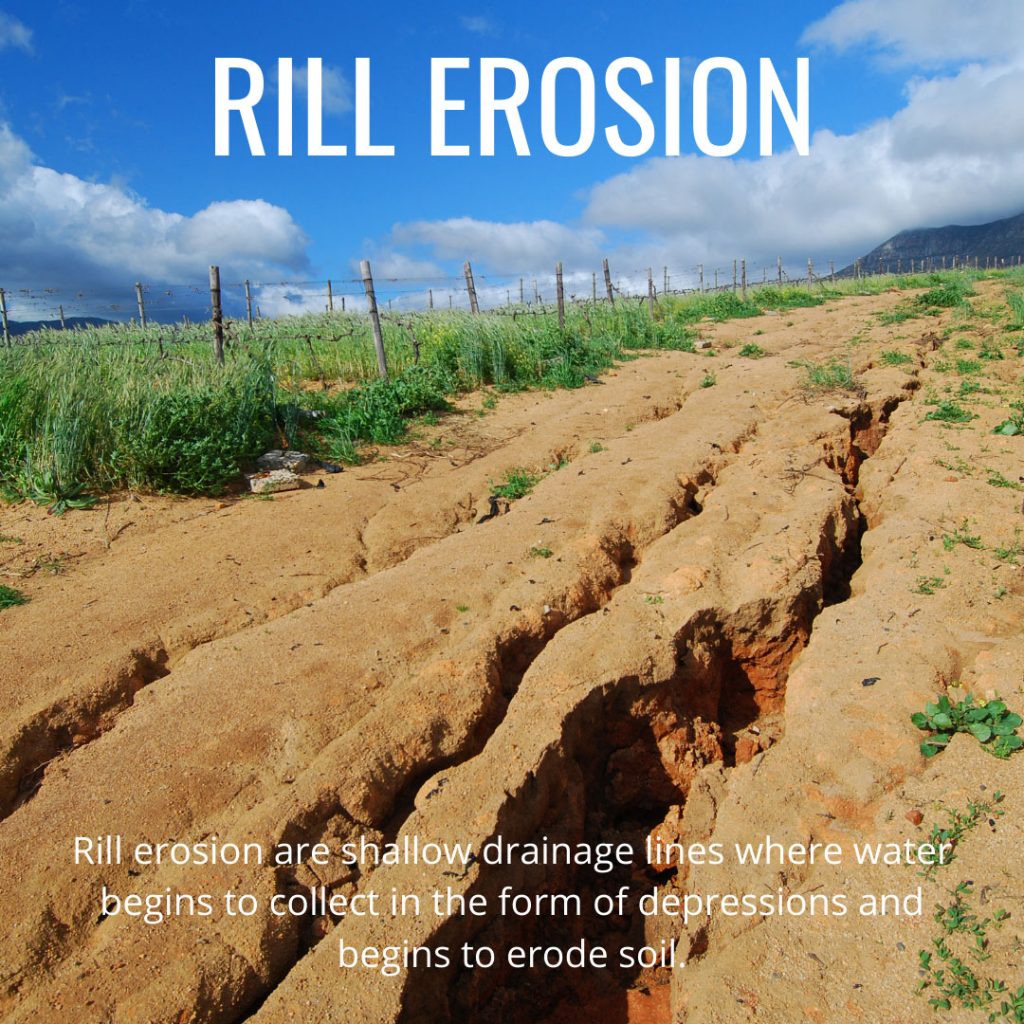Ever wondered why some landscapes slowly transform over time, while others seem to vanish in an instant? That’s the difference between erosion and scouring! These two natural processes may sound similar—and they both involve the movement of soil or sediment—but their causes, effects, and impacts couldn’t be more distinct.
Erosion is like the slow-and-steady artist shaping Earth’s surface, while scouring is its more impulsive cousin, working fast and often leaving a dramatic mark. Whether you’re an environmental science enthusiast, a civil engineer, or just someone curious about the forces shaping our world, understanding the difference between erosion and scouring is essential.

What Is Erosion?
Erosion is nature’s slow but steady sculptor, reshaping the Earth’s surface one grain of soil or rock at a time. It’s the process where natural forces—like wind, water, ice, and gravity—wear down rocks, soil, and other materials and transport them elsewhere. Unlike scouring, which we’ll get to in a moment, erosion works on a large scale and often takes years, decades, or even millennia to make its mark.
There are several types of erosion:
- Water erosion: Rainfall, rivers, and ocean waves gradually carve out valleys, riverbanks, and coastal cliffs. Think of the Grand Canyon—a masterpiece of erosion millions of years in the making.
- Wind erosion: Strong winds pick up loose sand and dust, often creating stunning landscapes like desert dunes or dry plains.
- Glacial erosion: When glaciers move, they scrape and grind the ground below, leaving behind deep valleys and jagged peaks.
- Human-induced erosion: Activities like deforestation, farming, and mining can speed up erosion, sometimes with disastrous effects. Fun fact: Erosion caused by human activities is happening 10–40 times faster than natural erosion!
Erosion isn’t always a bad thing, though. It’s responsible for some of the most breathtaking natural landscapes we admire today. However, when it accelerates due to human activity, it can strip away fertile soil, contribute to desertification, and lead to landslides.
What Is Scouring?
Scouring, on the other hand, is like erosion’s impatient little sibling. It happens suddenly, often in a small, localized area, and it’s usually triggered by water moving at high speeds. While erosion plays the long game, scouring prefers to make a quick (and often destructive) statement.
Imagine a fast-flowing river rushing around the base of a bridge. Over time, the water’s turbulence can wash away the sediment and soil supporting the bridge’s foundation. That’s scouring in action. It’s also common in areas around dams, culverts, or pipelines, where water flow is concentrated and particularly forceful.
There are two main types of scouring:
- Localized scour: This happens around a specific structure, like a pier or a pipeline. It’s one of the leading causes of bridge failures worldwide!
- General scour: This occurs when water removes sediment from larger areas, often during floods or storms.
The consequences of scouring can be severe, particularly for infrastructure. For example, the Silver Bridge collapse in 1967 was partly due to scouring weakening the bridge’s foundation. Unlike erosion, which you can sometimes predict and prepare for, scouring often strikes without warning, making it a key concern for engineers.
In Summary
To sum it up:
- Erosion is widespread, gradual, and caused by natural forces like water, wind, and ice.
- Scouring is sudden, localized, and typically associated with high-velocity water around structures.
Erosion shapes the Earth’s surface over time, while scouring can undermine the very foundations of our infrastructure. Both are powerful, but they’re playing very different games.

Differences Between Erosion and Scouring
Now that we’ve defined erosion and scouring, let’s dive into their key differences. Think of this as the ultimate showdown between the patient artist (erosion) and the quick disrupter (scouring). While both involve the movement of sediment, their processes, causes, and impacts set them apart in fascinating ways.
Process: Slow and Steady vs. Sudden and Intense
The process of erosion is all about persistence. Over years, decades, or centuries, natural forces like water and wind gradually wear down surfaces and transport materials elsewhere. Imagine a river slowly carving out a canyon, or wind smoothing out the sharp edges of a rocky desert landscape. The changes are so gradual that you might not notice them happening in real time.
Scouring, by contrast, is all about speed. It occurs when water moves with enough force to rapidly dislodge sediment in a specific area. For example, during a heavy flood, fast-moving water can strip away soil around a bridge’s foundation in a matter of hours. Where erosion works on geologic time scales, scouring is a blink-and-you’ll-miss-it phenomenon.
Causes: Natural vs. Human-Triggered Factors
Erosion is driven by natural forces, though human activities can significantly accelerate the process. Deforestation, overgrazing, and poorly managed agriculture are major contributors to erosion worldwide. Without plant roots to anchor soil, it becomes much easier for wind or water to sweep it away.
Scouring, on the other hand, often happens near human-made structures like bridges, dams, or pipelines. It’s caused by turbulent water flow—think of water swirling around a bridge pier or rushing through a spillway. While natural events like floods can also trigger scouring, its association with infrastructure makes it a hot topic in civil engineering.
Impact on Nature and Infrastructure
Here’s where things get really interesting:
- Erosion’s impact is broad and long-term. Over time, it can reshape entire ecosystems and landscapes, creating valleys, deltas, and even new coastlines. However, when accelerated by human activity, erosion can lead to soil degradation, loss of arable land, and increased risk of landslides.
- Scouring’s impact, by contrast, is localized but immediate. It’s a leading cause of bridge collapses, dam failures, and other structural disasters. In fact, scouring was identified as the cause in over 60% of bridge failures in the U.S. during the 20th century. That’s why engineers take scouring seriously—it can quite literally undermine the ground we build on.
Timeframe: The Turtle vs. the Hare
Erosion takes the long, scenic route. It’s a process measured in years or centuries, slowly but surely transforming the Earth’s surface. Scouring, however, is the sprinter. It can occur during a single storm or flood event, leaving its mark almost instantly.
Erosion vs. Scouring
| Aspect | Erosion | Scouring |
|---|---|---|
| Process | Gradual and widespread | Sudden and localized |
| Causes | Natural forces (water, wind, ice) | High-velocity water flow |
| Timeframe | Long-term (years to centuries) | Short-term (hours to days) |
| Impact | Shapes landscapes over time | Weakens infrastructure |
| Example | Grand Canyon formation | Bridge foundation washout |
Case Study: A Tale of Two Processes
- Erosion in Action: The Colorado River spent millions of years carving out the Grand Canyon, revealing layers of ancient rock and creating one of the most iconic natural landmarks in the world.
- Scouring in Action: In 1987, the Schoharie Creek Bridge in New York collapsed due to scouring after heavy rainfall. The high-velocity water swept away sediment supporting the bridge’s piers, causing a sudden and catastrophic failure.
Erosion and scouring may share some similarities, but they couldn’t be more different in their processes, causes, and consequences. Erosion shapes our world over time, while scouring is a reminder of nature’s power to disrupt our creations in an instant.
Types of Erosion and Scouring
To truly grasp the difference between erosion and scouring, it’s essential to understand their different types. Both processes occur in various forms, influenced by unique forces and conditions. Let’s explore these in detail.
Types of Erosion
Erosion might be slow and steady, but it’s incredibly versatile. Here are the major types:
- Water Erosion
Water is one of the most powerful agents of erosion. It works in various ways:- River Erosion: Flowing rivers gradually carve out valleys and canyons. Over time, they carry away sediment, often depositing it downstream to create fertile plains or deltas.
- Rainfall Erosion: Heavy rain can dislodge soil, particularly on slopes, leading to surface runoff and the formation of gullies.
- Coastal Erosion: Ocean waves crash against cliffs and beaches, removing sediment and reshaping coastlines. For instance, the famous White Cliffs of Dover in England are slowly retreating due to coastal erosion.
- Wind Erosion
In arid regions, wind can pick up and carry loose particles of sand and dust, gradually wearing down rock surfaces. This is the force behind the sculpted rock formations you see in deserts, like the iconic arches in Utah. - Glacial Erosion
Glaciers act like slow-moving bulldozers. As they creep across the land, they scrape away soil and rock, creating U-shaped valleys, fjords, and sharp peaks. For example, Yosemite Valley owes its stunning shape to glacial erosion. - Human-Induced Erosion
We’re often our own worst enemy. Activities like deforestation, overgrazing, and poor farming practices leave soil exposed and vulnerable to erosion. According to studies, nearly 25 billion tons of fertile soil are lost annually due to unsustainable land use practices.
Types of Scouring
Unlike erosion, scouring is typically associated with water and often happens around structures. Here are its main forms:
- Localized Scour
This occurs in small, concentrated areas, usually near man-made structures like bridge piers, pipelines, or abutments. When water flows past these obstacles, turbulence forms, eroding the sediment around them. If left unchecked, localized scour can lead to catastrophic failures, as seen in bridge collapses worldwide. - General Scour
General scour occurs over larger areas, often during events like floods or storms. When water flow increases dramatically, it can strip away layers of sediment from riverbeds or floodplains, altering the landscape. - Clear-Water Scour vs. Live-Bed Scour
- Clear-Water Scour happens when water removes sediment in areas where there’s no new material being transported. This often occurs after a dam or reservoir is built, as the flow of sediment upstream is blocked.
- Live-Bed Scour, on the other hand, occurs when water carries sediment while also eroding the riverbed or seabed. This is common in rivers during floods when the flow is intense and sediment is abundant.
Key Differences in Types
| Feature | Erosion Types | Scouring Types |
|---|---|---|
| Scale | Large and widespread | Small, localized, or event-specific |
| Forces Involved | Wind, water, ice, gravity | High-velocity water |
| Human Interaction | Accelerated by agriculture, deforestation | Primarily linked to infrastructure |
| Examples | Grand Canyon (water erosion), Sahara Desert (wind erosion) | Bridge scour, dam scour |
Real-Life Example: Types of Scouring and Erosion in Action
- Erosion Example: The Mississippi River Delta is shrinking at an alarming rate due to water and human-induced erosion. Changes in the river’s flow and human-made levees have reduced sediment deposition, leaving the delta more vulnerable to rising seas.
- Scouring Example: The Sydney Harbour Bridge faces regular inspections and maintenance due to localized scouring around its foundation piers. Engineers have installed scour countermeasures, like rock armoring, to protect the structure.
Why This Matters
Understanding the different types of erosion and scouring helps us appreciate the scale of these processes and the specific ways they impact our environment and infrastructure. Whether it’s a gradual reshaping of a coastline or a sudden threat to a bridge’s foundation, these forces are constantly at work, challenging us to find innovative solutions.
